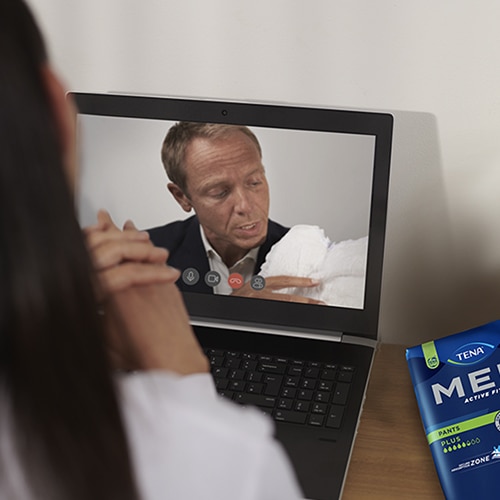There are lots of types of elderly male incontinence, mostly affecting men over 40. Here are a few of the most common.
Please note: it’s best to visit to a doctor or health care professional to explore possible causes of urinary incontinence in elderly males. Incontinence treatment for men should be discussed with a trusted doctor.
Urge urinary incontinence
Urge or urgency incontinence is defined as the involuntary loss of urine associated with a strong desire or urgency to urinate. It can be hard to define a cause as there are many different factors that cause urgency, from UTIs, to medication, to an enlarged prostate.
Of course, drinking too much can lead to frequent toilet visits, but so can drinking too little, as urine gets too concentrated and irritates the bladder lining. The simplest natural remedies for incontinence in men include lifestyle changes, such as limiting alcohol intake, quitting smoking and drinking more water.
Stress urinary incontinence
The most common symptoms of stress incontinence occur when pressure is put on the bladder, e.g. during exercise or a sneeze, and the pelvic floor muscles can’t support the urinary tract as needed to prevent leakage. It’s the most common type of incontinence in women - in men, it’s usually a side effect of prostate surgery.
Post micturition dribble
Some men experience drips and dribbles after visiting the toilet. This is most commonly caused by urine remaining in the urethra after urinating.
Terminal dribble
This is when the urine flow slows to a trickle or dribble which is hard to shut off and finish.
Neurogenic bladder
Problems associated with brain function (such as MS or Parkinson’s) and damage to the spinal cord or nerves can reduce bladder control. The symptoms may differ depending on what part of the nerves are affected.
Bladder emptying difficulties
Prostate enlargement in men is a common cause of bladder emptying difficulties. However, it may also be a result of a weak bladder muscle caused by certain types of medications or nerve damage. If the bladder is not able to completely empty, there is a risk of urine building up in the bladder. Symptoms may include: difficulty in starting to urinate, feeling that the bladder isn’t empty after urinating, an interrupted or weak urine stream, dribbling and frequent night time urination.









